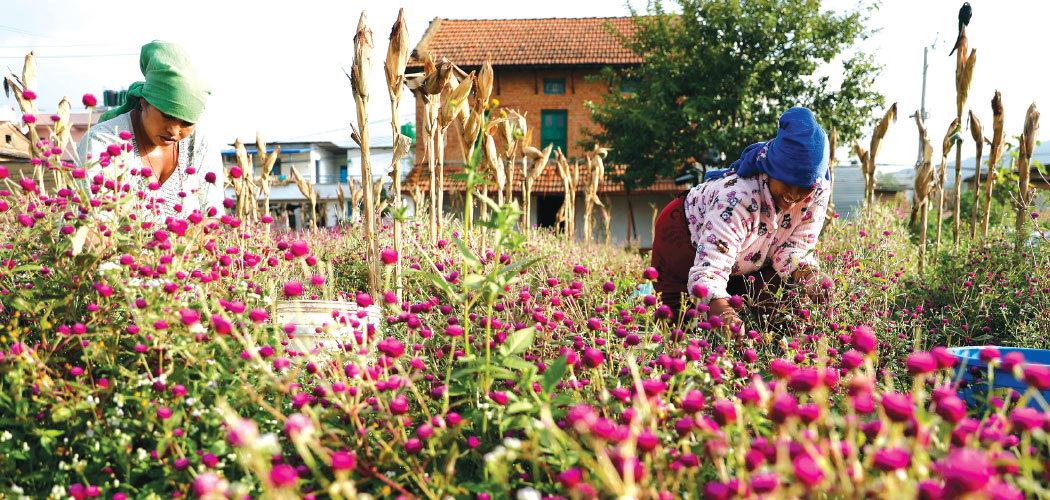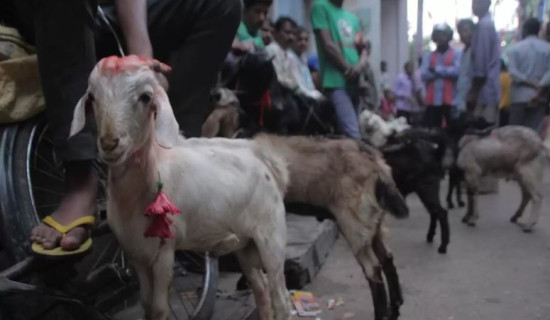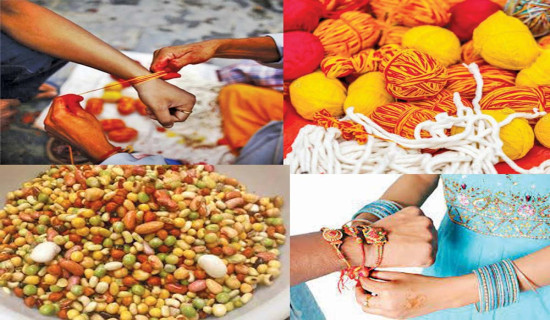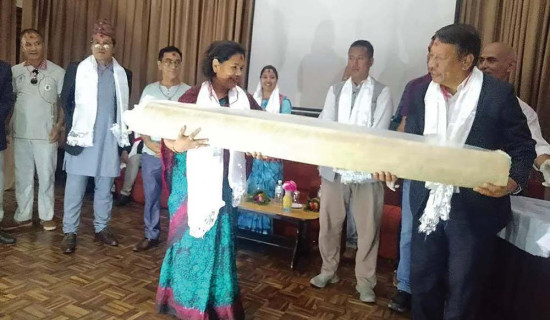- Thursday, 18 December 2025
Tihar: Festival Of Lights And Sibling Bond
When we think about the Tihar festival, the flowers and lights strike our minds first. Tihar is best known for its vibrant decorations of flowers and lights. Likewise, Deusi and Bhailo are other features of this festival. It is also a time to express love and respect toward animals. Animals like cows and dogs are worshipped once a year with reverence in this festival. The people have already started preparing for Tihar, the second greatest festival. The five-day festival of Tihar is often considered more colourful and joyful than the 15-day Dashain.
Yamapanchak, the five-day Tihar festival, begins on Sunday and will be celebrated until Thursday. To celebrate the festival, people beautifully decorate their homes. Tihar festival is especially famous for Bhai Tika, the last day of the festival. On this day, brothers and sisters give gifts to their brothers and sisters. Sisters wish their brothers a long life. Children especially enjoy the festival by flying kites, playing cards with friends and family members. Markets are now bustling with people buying various items, particularly those related to Bhai Tika and Laxmi Puja.
Significance
Each day of Tihar has its own significance. The first day is for crows, considered messengers of Yama, the lord of death. The second day, Kukur Tihar, is when dogs are worshipped. The third day combines Gai Tihar and Laxmi Puja. Cows, which are respected as the mother of the universe, are worshipped in the morning and goddess Laxmi, the deity of wealth, in the evening. Homes, workplaces, and markets are decorated with flowers, lights and lamps. On this day, groups of girls go door to door singing Bhailo. On the fourth day, Govardhan Puja, Goru Puja, and Hali Puja are observed to honour contributions to agriculture. On the same day, the Newari community celebrates Mha Puja, offering prayers to strengthen the mind, and body.
Nepal Sambat, the indigenous calendar of Nepal, enters the New Year. Groups of men perform Deusi singing from door to door. The final and main day of Tihar, Bhai Tika, is celebrated to honour the bond between brothers and sisters. Sisters pray for their brothers’ long life and prosperity by applying Sapta Rangi Tika and placing Makhamali garlands around their necks. People who do not have sisters and brothers visit Rani Pokhari, located at the center of Kathmandu, to receive Tika- it opens only once a year on this day.
Marigold and Globe Amaranth (makhamali) flowers hold special value, as it is used only once a year during Bhai Tika. Farmers have already started picking and making garlands of Makhamali flowers for Tihar. Nepal is self-reliant in producing Makhamali and Chrysanthemum (Godawari) flowers. The demand for marigold flowers, however, remains the highest among all. Despite growing production, the country still faces a short of marigolds during Tihar as its demand is high to decorate the houses, offices and business complexes. According to the Nepal Floriculture Association (NFA), an estimated 4 million marigold garlands will be consumed during this year’s Tihar festival.
Of this, about 3.5 million garlands are expected to come from domestic production, while the remaining demand will be met through imports from India. The NFA reports that Nepal meets 87.5 per cent of flower demand domestically and needs to import the remaining 12.5 per cent of flowers from India. Many households in rural areas and on the outskirts of cities cultivate marigolds and other flowers on their farmland for personal use. However, the NFA does not include such self-grown production in its official data. The highest demand for marigolds is observed in urban centres.
Overall, demand for flowers has continued to grow year by year, even though domestic production has grown only slightly. Compared to last year, when 3.3 million marigold garlands were produced domestically and 700,000 garlands were imported. This year’s demand has shown a noticeable increase. It has risen to 3.5 million of garlands, with an estimated 500,000 garlands expected to be imported this year. The wholesale price of a marigold garland is estimated to be between Rs. 80 and Rs.85.
"This year, 87.5 per cent of market demand will be met by domestic production, while the remaining 12.5 per cent needs to be imported from India, stated Rajesh Bhakta Shrestha, President of NFA. He said around 4 million marigold garlands, 550,000 Globle Amaranth (Makhamali) garlands, 20,000 Chrysanthemum (Godawari) garlands, and 50,000 mixed garlands will be consumed this Tihar. In total, approximately 4.6 million garlands of Marigold, Makhamali, and mixed flowers will be required this Tihar.
The demand for Makhamali flower is high, but it importance and use are limited to a single day during Tihar festival, specifically for Bhai Tika. Other flowers, such as marigold and Godawai are used on other days for multiple purposes -- for worshipping and decoration. However, Makhamali flowers are not used for worship on other days, but Bhai Tika is considered incomplete without Makhamali flowers. Data from NFA shows that around 350,000 Makhamali garlands are expected to be consumed this year, up from 325,000 of last year. Nepal is not only self-reliant in the production of Makhamali flowers, but also exports to Nepali communities in Europe, America and Gulf countries. Exports are on the rise with 200,000 garlands sent abroad this year, compared to 150,000 last year.
Commercial cultivation
Makhamali flower has been cultivated commercially in Suryabinayak Municipality Ward No. 7, gaining wider recognition after the local government promoted floriculture. Gundu is particularly famous for Makhamali flower cultivation, alongside Marigold, generating a good income for thousands of local farmers. Late Pahalman Nagarkoti started commercial cultivation of Makhamali flowers about 41 years ago. Urmila Nagarkoti, daughter of Pahalman, a successful flower entrepreneur and chairperson of the Ward-level Disabled Coordination Committee, said the flower business has significantly boosted local livelihoods, turning the ward into a model for commercial floriculture.
The ward covers an area of 5.94 square kilometers, with around 50 hectares dedicated to flower cultivation. The Gundu area is located in the southern part of the Araniko Highway and has the facilities of paved roads and transportation facilities. Through the Sana Kishan Agriculture Cooperative Ltd, the municipality provides grants to floriculture farmers, benefiting over 428 individuals. Florist Anita Basnet supplies flowers to Nepalis in countries such as the UAE, South Korea, Japan and the US, mostly via personal contacts. Normally, farmers typically begin harvesting in mid-August and use cold storage to keep flowers fresh until Tihar.
(Shrestha is a journalist at this daily.)
















